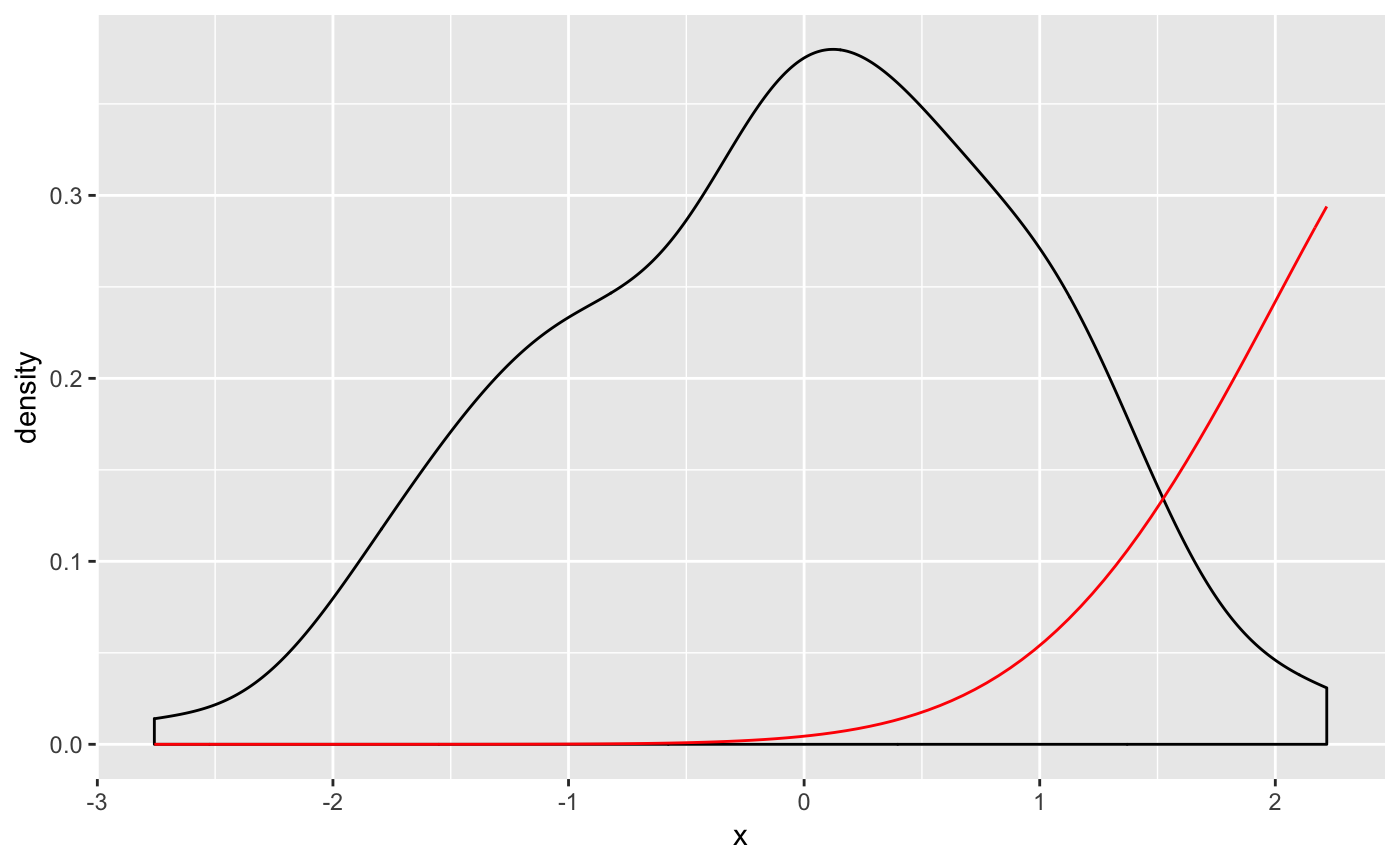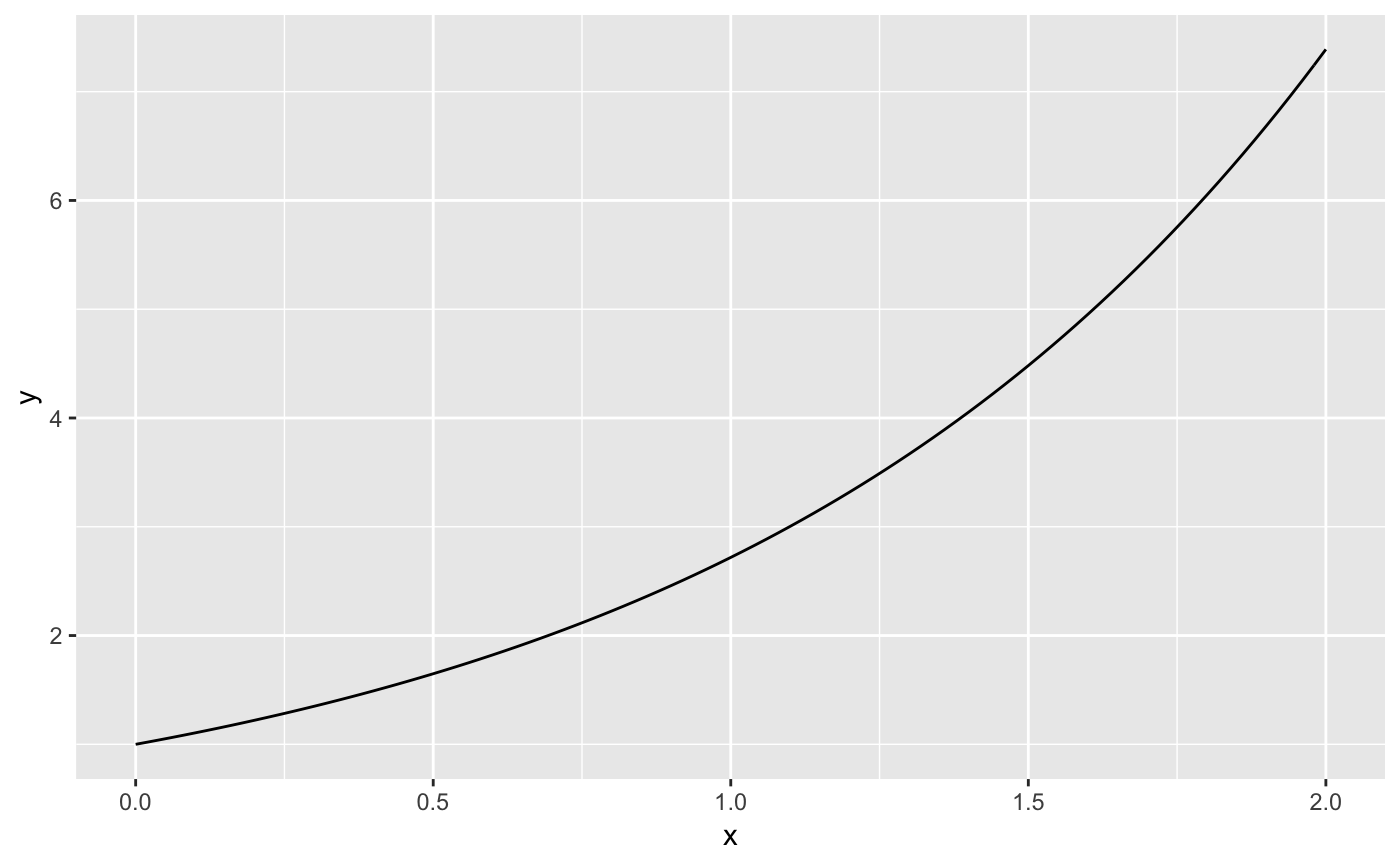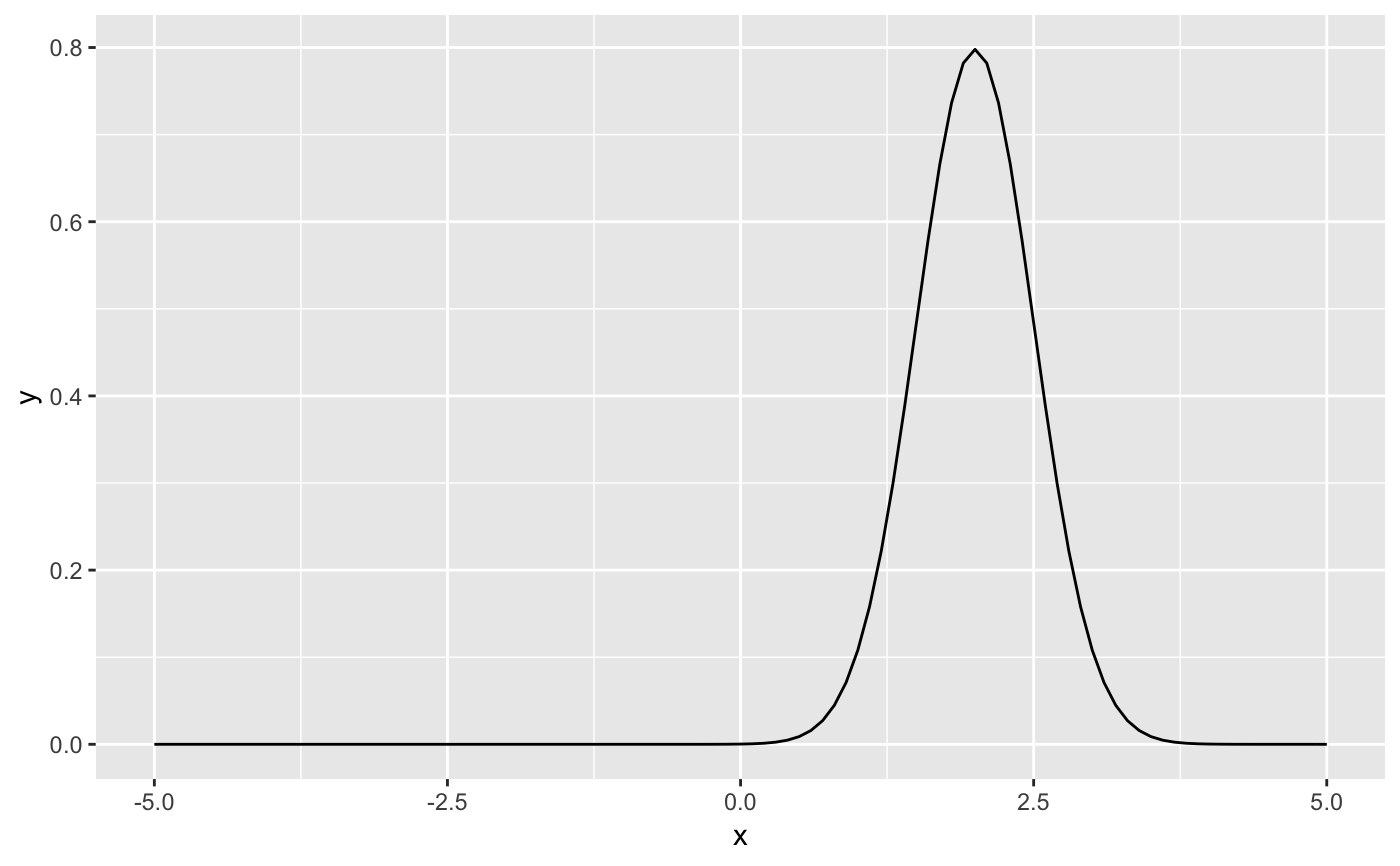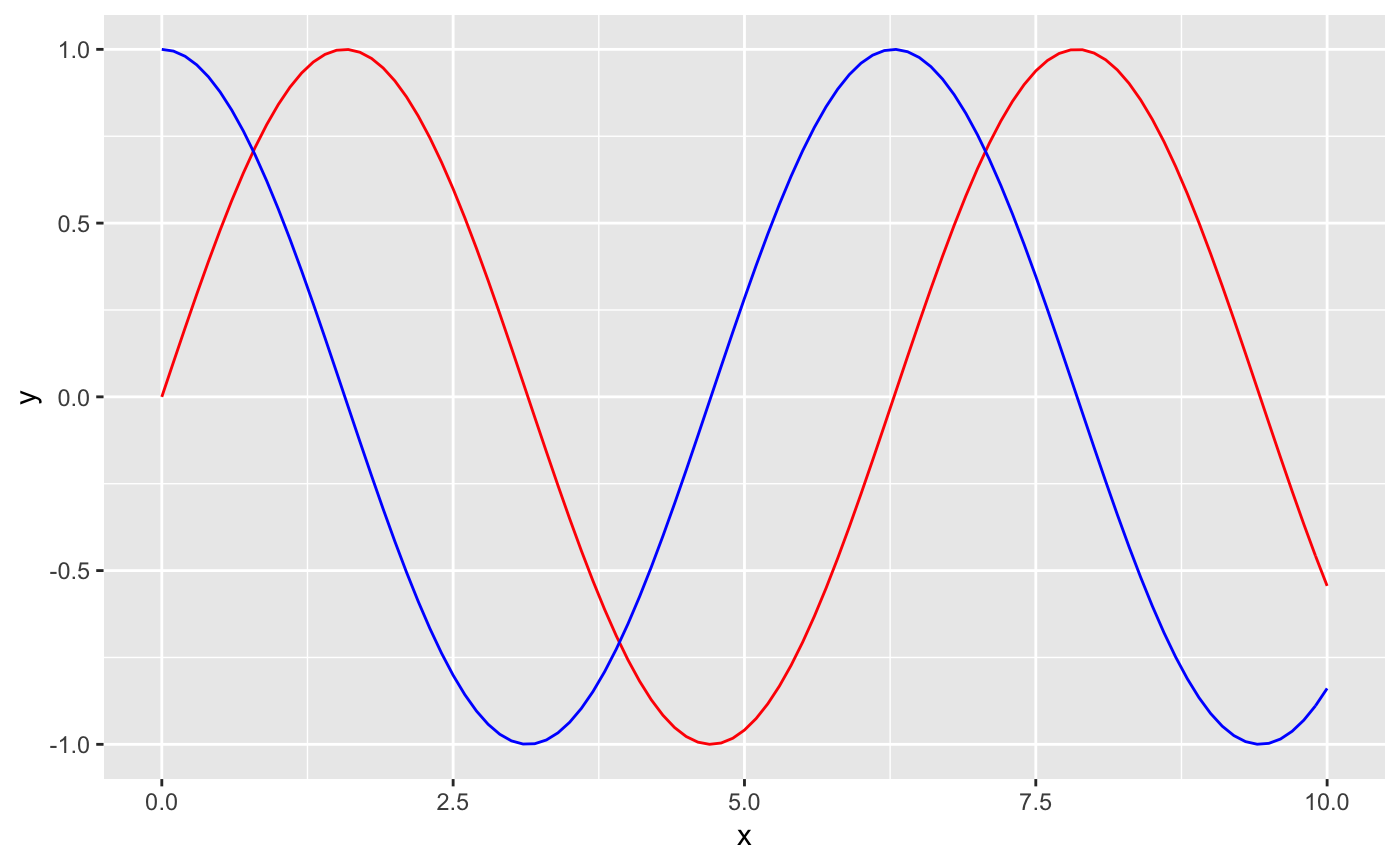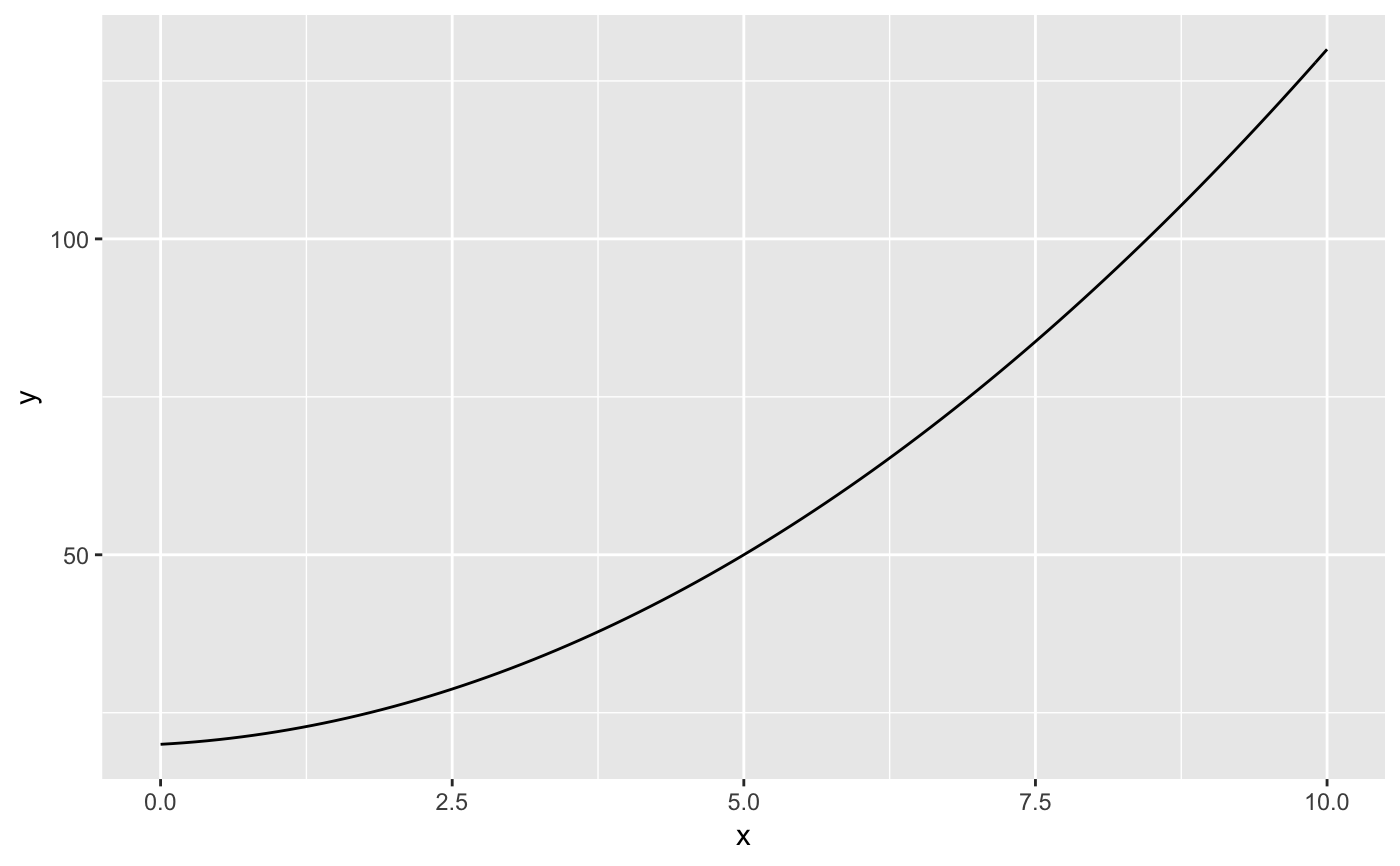This stat makes it easy to superimpose a function on top of an existing plot. The function is called with a grid of evenly spaced values along the x axis, and the results are drawn (by default) with a line.
stat_function(mapping = NULL, data = NULL, geom = "path", position = "identity", ..., fun, xlim = NULL, n = 101, args = list(), na.rm = FALSE, show.legend = NA, inherit.aes = TRUE)
Arguments
| mapping | Set of aesthetic mappings created by |
|---|---|
| data | The data to be displayed in this layer. There are three options: If A A |
| geom | The geometric object to use display the data |
| position | Position adjustment, either as a string, or the result of a call to a position adjustment function. |
| ... | Other arguments passed on to |
| fun | function to use. Must be vectorised. |
| xlim | Optionally, restrict the range of the function to this range. |
| n | number of points to interpolate along |
| args | list of additional arguments to pass to |
| na.rm | If |
| show.legend | logical. Should this layer be included in the legends?
|
| inherit.aes | If |
Aesthetics
stat_function understands the following aesthetics (required aesthetics are in bold):
groupy
Learn more about setting these aesthetics in vignette("ggplot2-specs")
Computed variables
- x
x's along a grid
- y
value of function evaluated at corresponding x
Examples
set.seed(1492) df <- data.frame( x = rnorm(100) ) x <- df$x base <- ggplot(df, aes(x)) + geom_density() base + stat_function(fun = dnorm, colour = "red")base + stat_function(fun = dnorm, colour = "red", args = list(mean = 3))# Plot functions without data # Examples adapted from Kohske Takahashi # Specify range of x-axis ggplot(data.frame(x = c(0, 2)), aes(x)) + stat_function(fun = exp, geom = "line")# To specify a different mean or sd, use the args parameter to supply new values ggplot(data.frame(x = c(-5, 5)), aes(x)) + stat_function(fun = dnorm, args = list(mean = 2, sd = .5))# Two functions on the same plot f <- ggplot(data.frame(x = c(0, 10)), aes(x)) f + stat_function(fun = sin, colour = "red") + stat_function(fun = cos, colour = "blue")# Using a custom function test <- function(x) {x ^ 2 + x + 20} f + stat_function(fun = test)

